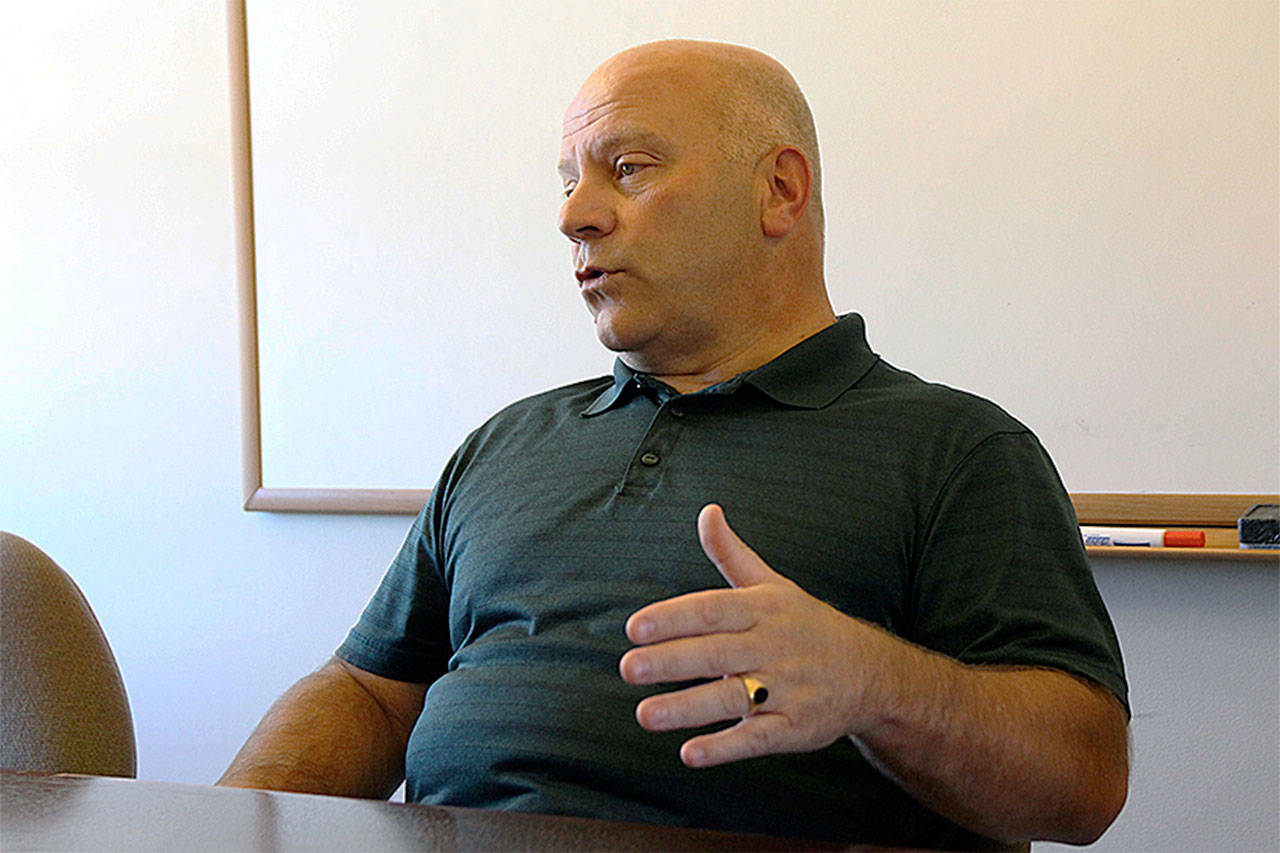Law enforcement agencies on Whidbey Island have a range of policies when it comes to the carotid control hold, also known as the sleeper hold or the lateral vascular neck restraint.
Langley recently banned them. The Oak Harbor Police Department and the Washington State Patrol prohibit the use of the hold unless deadly force is the only possible option. In other words, if an officer isn’t in a situation dangerous enough to warrant shooting someone, he or she can’t employ a carotid control hold.
Island County Sheriff Rick Felici, however, has a significantly more lenient policy on carotid control holds, which he feels has the potential to save lives. The policy allows the carotid control hold in cases in which suspects are merely “physically resisting.”
Deputies are allowed to use the hold on children and pregnant women who are resisting deputies if “other available options reasonably appear ineffective.”
Police departments across the nation are reevaluating the use of force in the wake of George Floyd’s death at the hands of Minneapolis police officers. Chokeholds and neck-kneeling, which cut off a suspect’s ability to breath, have been the focus of scrutiny because of the number of times they have caused or contributed to a death in police custody.
But many departments are also looking at the carotid neck hold, which is different than a chokehold because it doesn’t cause choking — the cutting off of oxygen to the lungs. Instead, the hold is used by officers to subdue a suspect by compressing arteries in the neck and cutting off blood to the brain, leading to brief unconsciousness if done right.
The Seattle Police Department is among the major agencies that have recently prohibited the use of the carotid hold.
Felici defends the use of the hold, although he said it’s been used only twice in the last 12 years. When it comes to the use of force, he argues against many absolute, inflexible rules because they don’t make allowances for extreme or rare situations deputies might face. One thing he’s learned as a long career in law enforcement, he said, is that every situation can’t be anticipated.
The sheriff said the carotid control hold can be especially useful when there’s a disparity in size between a law enforcement officer and a suspect.
It’s an argument used by police organizations in the past. A female deputy, for example, who is in danger of being overpowered by a large man shouldn’t be limited in her ability to defend herself, the agencies contended.
Felici said a carotid control hold, in certain situations, could negate the use of more-deadly force.
Taking the option away may leave a deputy with only a firearm as an option for preventing a suspect who presents an imminent threat of killing or injuring the officer or someone else, including self-harm situations.
“It could save the suspect’s life, or the life of a deputy for that matter,” he said.
Yet the Oak Harbor police and state trooper polices consider the carotid neck holds to be deadly force and, therefore, allow for such life-or-death situations, except for cases in which a subject is suicidal.
Oak Harbor Police Chief Kevin Dresker said officers, like anyone else, have the right to defend themselves and others from being murdered, even if it means employing a banned neck hold.
Craig Cyr, a member of the Langley city council, proposed the prohibition of the “carotid control hold” and the other council members unanimously agreed with little discussion on the matter.
Cyr said the hold can cause serious brain injury or even death if the flow of blood is cut off for too long.
“The carotid control hold has been associated with some severe injuries and is receiving scrutiny across the entire nation,” he said. “Over half of municipalities do not allow it as part of their use of force policies.”
The sheriff’s policy acknowledges the potential for injury and states that a deputy shall complete office-approved training in the use and application of the carotid control hold. It says that a deputy can employ the technique when it reasonably appears necessary to control a subject who is violent or physically resisting or when subject “has demonstrated an intention to be violent and reasonably appears to have the potential to harm deputies, him/herself or others.”
The policy states that the hold should be “generally avoided” on certain vulnerable people unless “the totality of the circumstances indicates that other available options reasonably appear ineffective, or would present a greater danger to the deputy, the subject or others, and the deputy reasonably that the need to control the individual outweighs the risk of applying a carotid control hold.”
The vulnerable people are identified as females known to be pregnant, the elderly, obvious juveniles and people who appear to have Down syndrome or obvious neck deformities or injuries.
The policy states that anyone who had a carotid neck hold applied should be checked out and monitored by a paramedic. In addition, the deputy’s supervisor needs to be alerted and the situation should be thoroughly documented.



